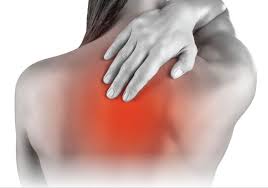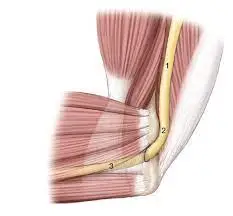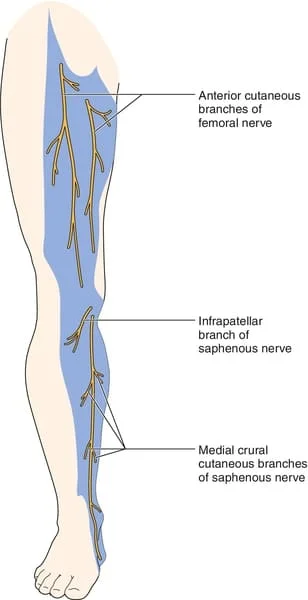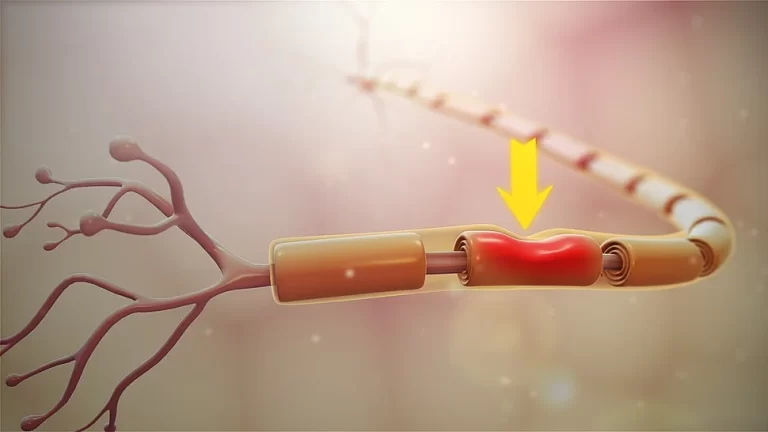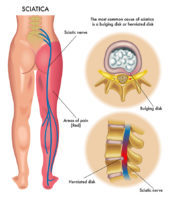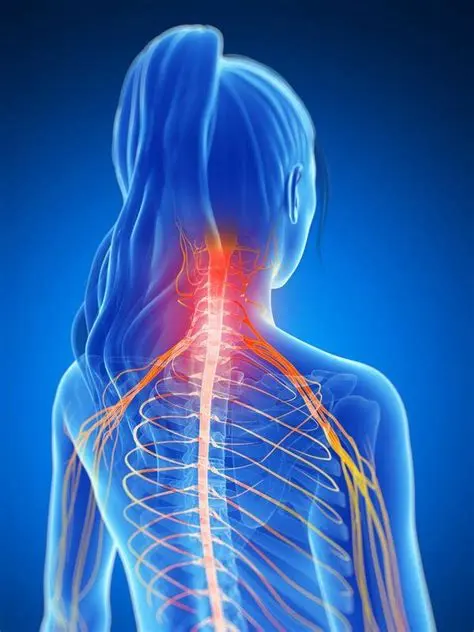A pinched nerve in the upper back
- A pinched nerve in the upper back happens when force or pressure irritates a nerve in this part of the body. Nerves make up the “wiring” system that carries messages middle of the brain and the rest of a person’s body.
- When the harmed nerve is in the upper back, doctors refer to the condition as cervical radiculopathy because the top section of the spine is known as the cervical spine.
- The pinched nerve could be a result of compression, constriction, and stretching. The symptoms of a pinched nerve in the upper back may involve pain, numbness, and weakness.
Table of Contents
Symptoms of the pinched nerve in the upper back
The symptoms of a pinched nerve in the upper back can differ, but they often include:
- pain,
- numbness or decreased sensation,
- tingling or the feeling of pins and needles in the hands or feet, which can create them feel as though they have “fallen asleep”,
- weakness in the muscles of the arm, shoulder, and hand.
- According to the American Academy of Orthopaedic Surgeons (AAOS), certain people with this condition report that the pain decreases when they place their hands on top of their heads. The American Academy of Orthopaedic Surgeons (AAOS) says that this movement may temporarily relieve the pressure on the nerve root.
- Due to the nature of nerves, the symptoms of a pinched nerve may not even happen at the location of the nerve injury. They can happen in areas that seem completely disconnected but are, in fact, linked. A tingling feeling in a person’s arm may be because of a pinched nerve in the neck, for example.
Causes of the pinched nerve in the upper back
The most common causes of damage to a nerve in the upper back involve:
Bone spurs
- Bone spurs are smooth bony humps that grow on the bones of the spine or around the joints. They usually happen in response to the disks in the spine collapsing and the vertebrae moving closer together.
- Bone spurs can squeeze close by nerves, causing a pinched nerve. Doctors may refer to bone spurs and disk alternates as degenerative disk disease.
- According to the American Academy of Orthopaedic Surgeons (AAOS), nearly half of all middle-aged and older people have worn disks and pinched nerves that do not actually cause painful symptoms.
Herniated disk
- A person’s disks consist of a tough outer layer (annulus) that surrounds a jelly-such as a middle section called the nucleus. A herniated diskTrusted Source occurs when the nucleus ruptures and breaks through the outer layer (annulus) into the spinal canal.
- A herniated disc can occur due to degenerative disk disease. When the nucleus bulges out of the annulus (outer layer), it can put pressure on the root of nerves. Depending on where this occurs, it can cause symptoms of a pinched nerve in the upper back.
Diagnosis of a pinched nerve in the upper back
- As well as discussing a person’s medical history with them, a doctor may choose to run certain tests to diagnose a pinched nerve and rule out other possible causes.
- To diagnoseTrusted Source a pinched nerve in the upper back, a doctor will 1st perform a physical exam. If they cannot make a diagnosis based on this exam, they may then utilize imaging techniques, such as X-rays, CT scans, or MRI scans. The doctor may perform an electromyography (EMG) test to measure the electrical activity of muscles.
Treatments for a pinched nerve in the upper back
- There is so many treatment optionsTrusted Source for a pinched nerve in the upper back, and the appropriate option depends on the severity of a person’s symptoms.
- Most of the time, doctors will recommend nonsurgical treatment, reserving surgery for more severe cases. Initially, a doctor may easily suggest rest.
Nonsurgical
- Neck brace: Turning on the location of the pinched nerve, a doctor may suggest wearing a soft cervical collar for short periods to allow the muscles in a person’s neck to rest.
- Pain medication: Nonsteroidal anti-inflammatory drugs (NSAIDs) may assist provide relief if the pain is due to nerve irritation or inflammation.
- Steroid injection: Steroids can decrease local inflammation, relieving the pressure on a nerve. A doctor may inject steroids close to the harmed nerve.
Surgical
- If a person does not require relief from nonsurgical options, their doctor may recommend surgery to treat the pinched nerve.
- Surgery may involve removing bone spurs or an area of a herniated disk in the spine. The selection procedure will turn on where a pinched nerve is in the upper back and what symptoms a person is experiencing.
Physiotherapy treatment of the pinched nerve in the upper back
- Range of Motion Neck Stretch: Standing up straight, delicately tilt your head back and hold the stretch. Then tilt it forward, later to the left side, and then to the right side. Make the tilts gentle, not extreme, and move delicately as you shift into each position.
- Shoulder Stretch: This stretch has 3 parts. First, standing up straight, draw your arms behind your back, grasp your hands together, and squeeze your scapulae (shoulder blades) toward each other. Hold this position for twenty seconds. Next, put your arms out in front of you, grasp your hands, and stretch them forward so that the muscles between your shoulder blades get a good stretch. Hold for twenty seconds. Eventually, reach your arms above your head, and with clasped hands reach vertically up, holding again for twenty seconds.
- Head Lift: This stretch is done in a lean-backed position. Lay comfortably on your back with your neck straight (not inclined on pillows) or, if you require some support, rest on a thin layer of padding. Line up your chin and forehead so that they create an imaginary line that is parallel to the ground. Then, tuck your chin down, lift your head just slightly off the resting surface, and hold it up in that lifted position for a count of five to ten seconds before returning, keeping your chin tucked.
- Isometric Stretches: The goal of isometric exercises is to delicately give resistance to the muscles without stimulating pain-sensitive areas:
- Isometric Neck Strengthening: This is the same as the Range of Motion (ROM) Neck Stretch, with an additional element of resistance. In a seated position, place the heel of 1 hand on your forehead. Delicately push your forehead into your hand, allowing your hand to provide gentle resistance. Do not let your head push the hand back. Hold for ten to fifteen seconds, then repeat with your hand on the left side of your head, resisting as you push in that direction, & then the right side, & finally the back of your head, to stretch & strengthen your neck on all sides.
- Isometric Rotation: In a seated position, place the palm of your right hand on your right cheek, then rotate your head to the right as you delicately resist the rotation with your hand. Hold for ten to fifteen seconds, then repeat on the other side, this time using your left hand to resist as you rotate your head to the left, and briefly hold the stretch.
While there are many exercises & stretches available for treating the pain caused by a pinched nerve, there is no single best approach, & the effectiveness depends on each person’s condition and individual pain sensitivity.
FAQs
The most frequently recommended treatment for the pinched nerve is rest for the affected part. Your doctor will ask you to end any activities that cause or aggravate the compression. Depending on the location of the pinched nerve, you may require a splint, collar, or brace to immobilize the area.
Pinched nerve signs and symptoms involve Numbness or decreased sensation in the area supplied by the nerve. Sharp, aching, or burning pain, which may radiate externally. Tingling, pins, & needles sensations (paresthesia).
In most cases, symptoms increase and nerve function resumes to normal within 6 to 12 weeks of conservative treatment. Conservative treatment options involve physical therapy and non-steroidal anti-inflammatory drugs (NSAIDs) such as ibuprofen.
The answer is yes! By applying pressure to the pinched nerve, it can assist relieve tension, reduce pain and inflammation, and promote circulation. It will also assist relax you, your muscles, and the affected area as well.
Heat & Ice Packs. Actually, this is a relaxing tip: take a warm bath. Muscle tightness could be the cause of that pinched nerve. When you put some heat on the part, the muscles around your nerve loosen up & relax.
Pinched nerves commonly get better in three to four days. However, if home care does not seem to help, you may need to look for a medical expert. If the pressure on the nerve is not relieved in a short amount of time, the nerve harm may become permanent, causing chronic pain and muscle weakness.
Again, physio is able to help in the treatment & management of this type of nerve pain. This outcome is from excessive pressure being applied by the tissues that surround the nerves as they run through the body, such as tendons, bones, muscles, or cartilage.
Most pinched nerve treatments should happen with a physiotherapist present. But, you will benefit from having a home program. This will assist you to establish daily tasks to improve your function even faster. You will such as be given specific stretches and exercises to complete.

